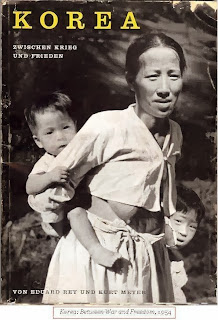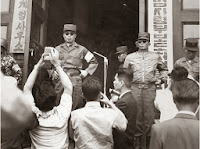Before
discussing a major discrepancy between Japan and South Korea in terms of how
they have interpreted 10,000 rounds of ammo to ROK force in South Sudan from Japan
“hypothetical enemy”, readers should get acquainted with a brief historical background
to better understand why Japan and S. Korea differ on their views.
Not
many know that S. Korea has long viewed Japan as its hypothetical enemy from
its inception when S. Korea was established as a new state whose first leader
was a Korean authoritarian dictator Syngman Rhee known as a U.S. puppet for his
brutal policy of forcing the Korean population to deny anything good about what
Japan had done during the 35 years of Japan-Korea annexation by nurturing
hatred toward Japan as soon as he was sworn in as the first president of the
provisional government of S. Korea in 1948 a few months before Tokyo Trial was
concluded.
Park Chung-hee, Dictator of ROK
Park Chung-hee, the Great Imperial Japanese Army and the article reporting on his strong desire to join the Great Imperial Japanese Army
Park Chung-hee and her daughter incumbent president Park Geun-hye
His
anti-Japan policy has been uninterruptedly handed down, one after another, to
the incumbent president Park Geun-hye whose father was Park Chung-hee (president of South Korea from 1963 to 1979) who begged The
Military Academy of the Great Imperial Japan to accept him as a cadet by
submitting a petition written in his blood and who later became Lieutenant of
the Great Imperial Japanese Army.
In 2005, the 9th president of
South Korea Roh Moo-hyun actually proposed to U.S.A. that both ROK
and U.S.A. should designate Japan as a “hypothetical enemy”. In 2012, Prime
Minister Noda was fully prepared to ink “the General Security of Military
Information Agreement (GSOMIA)”, however, S. Korea made a last-minute decision
to delay the signing of the military watershed pact.
The decision
was made by ROK president Lee Myung-bak (whose Japanese name is月山 明博Tsukiyama
Akihiro) born to Korean parents at Shimada dairy farm, Nishinari
ward, Osaka, Japan in 1941. His father had been employed by the farm since
1929. They left Japan for S. Korea by means of crossing the Sea of Japan aboard
a migrant smuggling boat in October, 1945 when Japan was in turmoil after her
first defeat in the 2,673 years long history of Japan.
Now, turning back to the new dispute over “10,000 rounds
of ammo”, S. Korean army participating in U.N. peacekeeping operation in S.
Sudan requested, through the embassy of S. Korea in Tokyo and U.N., the
Government of Japan to urgently send the required ammo of 15 rounds per soldier
to ROK soldiers protecting safety of refugees from rebels, that was revealed by
the Japanese Government Spokesman Mr. Yoshihide Suga.
However, S, Korean spokesman stated that ROK force only
requested for 10,000 rounds of ammo through UNMISS not due to the lack of ammo
and never made a direct request to the Government of Japan at all, so as “to
secure the supplemental supply of ammo”.
Coupled with the statement clearly denying Japan’s
efforts for the benefits of international community and Japan’s cooperation with
S. Korea who persistently regards Japan as its hypothetical enemy, the
government of S. Korea has never expressed any word of appreciation to Japan
for Japan’s immediate action in response to the intrepid request from the
humanitarian viewpoint of protecting “refugees” in S. Sudan and S. Korean
soldiers, even making an exceptional case to Japan’s self-imposed three
principles of arms exports, over which the ruling party Liberal Democratic
Party may respond to the leftists’ demand for accountability and transparency
even though the Government of Japan made the response even that anti-Japan U.N.
chief Ban Ki-moon considers reasonable in every respect.
This sort of S. Korean practice is nothing new and is not
any surprise to Japan. If S. Korea had any decency the international community
has nurtured overcoming many mishaps and hardship, it would not look a gift horse
in the mouth.











